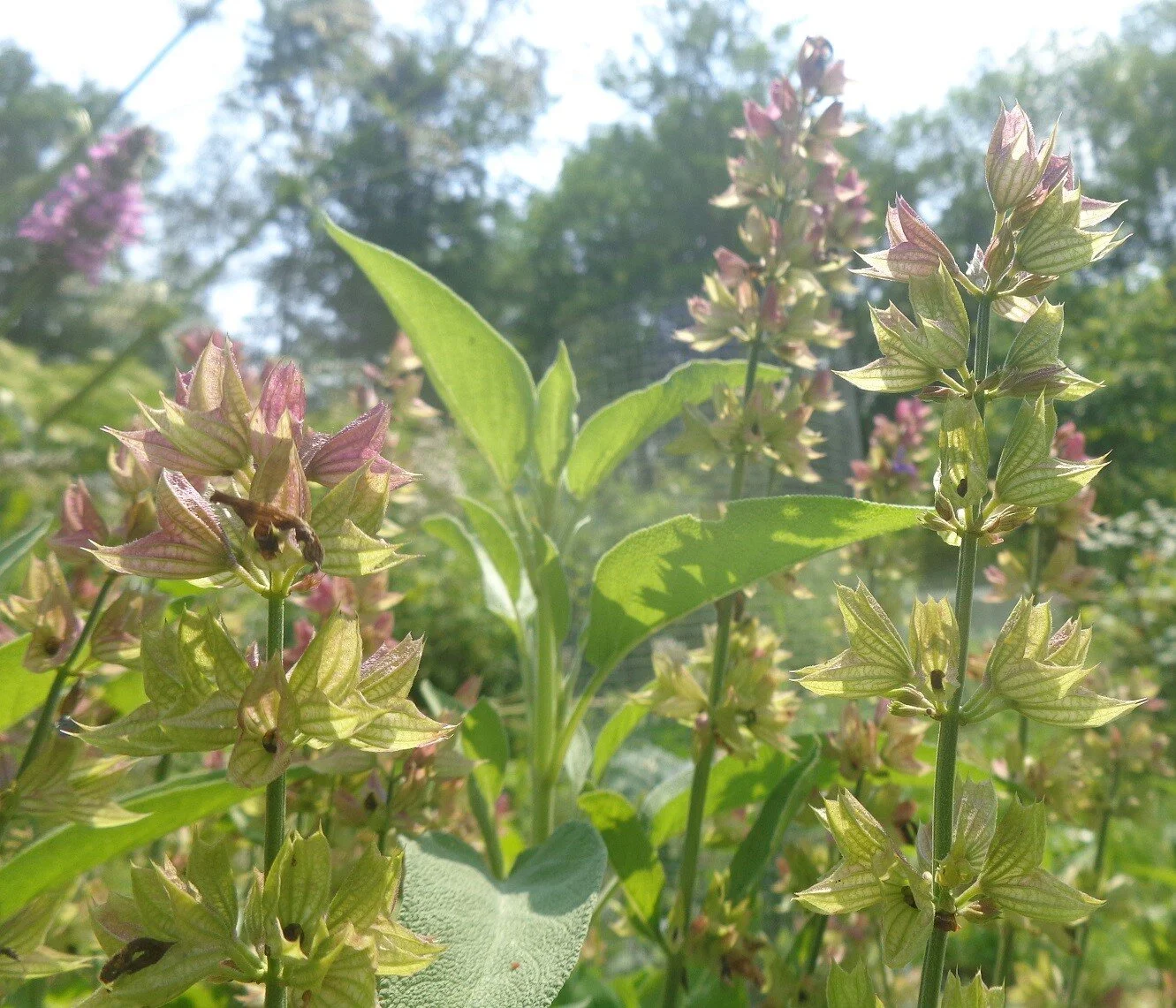Sage (Salvia officinalis)
Sage (Salvia officinalis)
Type: Herbaceous Perennial
Flower Structure: Series of terminal spikes with decorative bracts
Bloom Period: Late Spring through Early Summer
Bloom Color: Bluish Purple
Pollinators: Bees, Butterflies, Syrphid Flies, Hummingbirds
Habit: Clumping (1.5 to 2 feet tall by 2 to 3 feet wide)
Light: Full Sun
Hardiness: Zone 4 through Zone 8
Ships: Mature Bare Root Plant
Ship Dates: Spring shipping begins mid-April, Autumn shipments start in mid-October
Common Sage, famed for it’s culinary role across much of the globe, has a far less acclaimed but none the less very valuable role as a food source for pollinators. Much of this attention has been taken by the many wonderful, decorative varieties of salvia that have come to be features of cottage gardens and “white picket” landscaping, but Sage itself deserves no longer to fly under the radar in this regard.
A fairly hardy perennial (to Zone 5), Sage presents itself early in the season with it’s trademark oblong, goose-bumped, silvery green to powder blue leaves. In mid-spring, for those with a patient hand or enough sage to not completely pick the tops, pinkish buds emerge that somewhat resemble the buds of rhododendron.
The buds can sit patiently long enough that one might not realize the show the awaits. But as the days lengthen and the weather continues to warm, the plant is stimulated and these buds transform into emergent spikes whose flower bracts are nearly as decorative as the bluish-purple flowers themselves.
Before long, a mature plant is completely topped with these beautiful spikes of flowers. Many types of butterflies, particularly some of the smaller and medium-sized varieties, quickly follow suit, as do bees, beneficial flies, and hummingbirds. Sage has proven to be one of the most impactful plants in increasing our butterfly counts on the farm.
The compact, sturdy nature of Common Sage makes it one of the easiest plants in the salvia family to care for, as well as provide consistent pollen access – even through rainy years, as has been demonstrated on the farm. Highly recommended and rewarding both in the kitchen and the garden, particularly in drier areas where such productive flowering and beautiful displays can be harder to come by.
Care:
Sage is relatively simple to care for. It needs full sun to flourish, and a well-drained sight. It does very well in areas that dry out at times, and tolerates drought very well.
If you use Sage in your kitchen, very little need for pruning will otherwise be needed. Flavor is, of course, best before flowering, and later in the season if the spent flowers are removed.
Sage should be mulched with 1-3 inches of organic matter every autumn to help protect it’s roots from heaving during the winter’s freezes and thaws. Aim on the side of 2.5-3 inches if you are in Zones 4 and 5. Such mulching is especially critical in Zone 4, as some winters can be particularly harsh. This is perhaps the most important care point for sustaining your Sage.
Divisions can be done every 3 to 4 years to keep the vigor (and flavor) of Salvia officinalis at it’s optimum.






